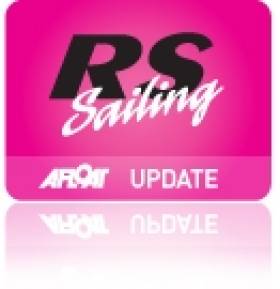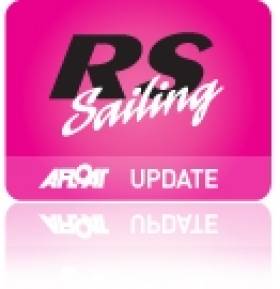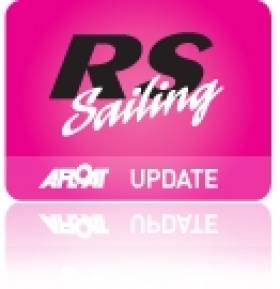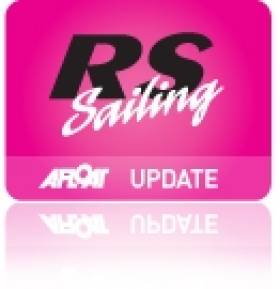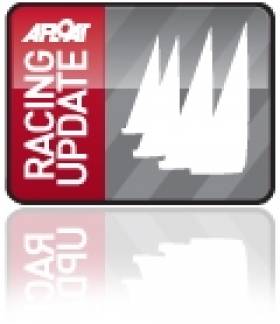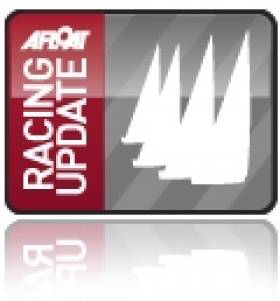Displaying items by tag: Elite
Belfast Lough RS Elite Class Biggest In UK, More Fleets For Strangford Lough & Carrickfergus
#RSsailing – The RS Elite Class is about to celebrate an exciting 2015, as new fleets build and events are planned to mark its first decade of racing and great camaraderie.
It all began at Hayling Island SC where, fittingly, a major surge is underway as new owners including an Olympic Gold medallist and multiple world and national champions join the fleet, creating what will surely be the most competitive Elite fleet so far, and a significant challenge to local Solent fleets at the RYS and RLymYC.
In Northern Ireland, the RS Elite fleet on Belfast Lough is the biggest in the UK, and Irish events will be boosted as new fleets build on nearby Strangford Lough and in Carrickfergus.
Meanwhile activity is also growing internationally for the Class, on the stunning Oslo Fjord in Norway the youngest Elite fleet, at Tonsberg Seilforening, is into double figures with more expected for the 2015 season. At Nonsuch Bay, Antigua more boats have recently added to the fleet and qualification is underway for their flagship event, the Nonsuch RS Elite Challenge, held on lay-day of Sailing Week - fast becoming one of the famous regatta's most popular attractions.
The first RS Elite has just been delivered to Sydney, Australia to drive forward development of a new fleet down-under by an enthusiastic group of sailors looking for pure and exciting keelboat racing.
With international fleets growing at venues such as these, glamorous RS Elite events seem assured!
Celebrations this year will focus on the Solent, which may not have Caribbean sunshine or a Harbour Bridge but it does enjoy regular sea breezes and is one of the world's great yachting centres. The Royal Lymington Yacht Club will play host to the 2015 UK Nationals and the packed programme includes several 10th anniversary highlights, afloat and ashore. Cowes Week follows, where a record RS Elite fleet is expected and the first four days will form the Southern Area Championships, rounded off by the Class's Anniversary Gala Dinner and prize giving. If you have an Elite – you undoubtedly need to head to the Solent this summer.
RS Elite British Champs Won By Jono Brown at Royal North Ireland YC
#RSELITE – RS Elite Works Boat skipper Jono Brown made a clean sweep of the RS Elite British National Championships at Royal North of Ireland Yacht Club leading the ten race event from start to finish. Brown had no result out of the top five in the 28–boat fleet giving him a clear ten point cushion over Royal North's own Tiffany Brien in second. Third was Martham Wadham. Scroll down for full results below.
RNIYC served up another truly fantastic Championship on Belfast Lough from 22-25 August, sponsored by Brewin Dolphin and North Down Tourism. With top Elite Class sailors from Ireland, Scotland and England as well as two Irish Olympians and a touch of glamour added by ex Miss Northern Ireland, Tiffany Brien (fresh from a season competing in a 49er FX) it was always going to be tense racing with light winds forecast throughout the event. Place changing to the finish in every race meant there was never a chance to relax in the evenly matched one-design fleet.
Jono, Lyn and David Brown in Aeolus were on top of their game in these conditions and put together a remarkably consistent series that sees them take the trophy to the Royal Burnham YC for the third time. A thirty degree right hand shift on the first beat of Race 1 favoured them and dropped several other top teams to the back of the fleet, making their first victory look lucky, but there was nothing lucky about their follow up results. A 5th place was Aeolus' lowest result meaning victory was theirs with a day to spare – truly impressive given the vagaries of the breeze in several races.
Behind the Brown's a serious battle for second place developed between local boat Kin, sailed by Tiffany, Simon and Jack Brien and the Royal Lymington YC based team of Martin & Amanda Wadhams sailing with Michael Browne on Kiss. Kin was more erratic with scores including several race wins but also a couple in double figures, whereas Kiss won only one race but discarded a 6th. Going into the final race the pair were tied on points, safe for second or third, so a gripping battle all around the track ensued with the lead changing many times. After splitting gybes at the final leeward gate Kin managed to tack ahead of Kiss on the finish line to snatch second overall by a length.
Fourth place overall went to another Irish boat Storm from the Royal Ulster YC, sailed by Stephen Polly, David Kelso and John Gunning despite their two OCS results which they managed to drop from the ten race, two discard series. New to the Class this year, they are clearly a force for the future. One of the biggest cheers at the prize giving was reserved for past champion Shaun McClean in Elixir sailing with his son Donald and Kevan Gibb from the Royal Forth YC, who finished fifth overall including winning race 7.
Title sponsors for this Championship, Brewin Dolphin, have a long association with sailing and made this event possible, including the excellent social program with typical Irish craic that tested the stamina of many sailors off the water as well as on it. Regional Director Hal Catherwood commented "Brewin Dolphin has been delighted to support such a high profile sailing event in Northern Ireland. It's fantastic to see world class sailors come together and battle it out on Belfast Lough." The RS Elite Class hopes this will be the first regatta of many alongside Brewin Dolphin.
Associate sponsor Charles Hurst, purveyors of some fine motor cars, added even more glamour with an Aston, Bentley and F-Type parked on the club lawn. We'll never forget event director Gerry Reid's face when someone faked a scratch on the Bentley with a strand of duct tape!
Next year the RS Elite Class will return to the Royal Burnham YC for its Nationals, followed by the Royal Yacht Squadron for the Southern Areas and then Cowes Week - a tempting three week schedule of awesome one-design racing and great socials with the band of friends that now make up the Class.
Full results from the Brewin Dolphin RS Elite Nationals are at www.rniyc.org and information about the RS Elite Class can be found at www.RSelite.org and www.RSsailing.com
Overall results – top six
1st – Aeolus – Jono, Lyn & David Brown -14pts
2nd – Kin – Tiffany, Simon & Jack Brien - 26pts
3rd – Kiss – Martin & Amanda Wadhams & Michael Browne – 27pts
4th – Storm – Stephen Polly, David Kelso, John Gunning – 39pts
5th – Elixir – Shaun & Donald McClean & Kevan Gibb – 43pts
6th – Sea Breezes – John McDowell, Trevor D'Arcy & T McMillan - 53pts
Next Stop Royal North Ireland After RS Elite Stadium Cup
#rselite – Next stop for the RS Elite Class is the Brewin Dolphin sponsored National Championships, this year hosted by the Royal North of Ireland YC on Belfast Lough, home of the largest RS Elite fleet but before that regatta takes place there was ultra short course racing at the Crewsaver RS Elite Stadium Cup this year when adverse tide upwind also made winning the pin and the dash for the shore the way only to go in Cowes.
With near perfect breeze and blue skies, conditions couldn't have been much better after the day's Cowes Week racing was over. The format followed previous editions at Cowes last year and on lay day at Antigua Sailing Week earlier this year. Each race lasted just 15 minutes, despite packing in three rounds of a windward / leeward course just metres from the shore - with the top two boats from two knock-out heats going through to a four boat final. The whole event took place within an hour, with live commentary on Cowes Radio.
The start of the Heat 1 saw competitors slow to get their heads around the short line, rapid fire start sequence and importance of pin end advantage over line bias. E'Tu sailed by past RS Elite Champion Donald McClean made the best of it to win from the Proctor team in Wombat.
By heat 2 the start line battle was on. Derek Priestley sailing Kiss looked to have it nailed, but while spectators thought he could push up the fleet and hold back from the line against the tide the team lost their bottle with 10 seconds to go and bailed out, gybing around to take sterns on port – too much of a deficit to regain...
In the final Jono Brown, another ex RS Elite champion, in Aeolus pulled off a perfect pin end start with the other three boats perfectly stacked up above him a metre back from the line. Putting the bow down Aeolus accelerated the fastest and was never challenged. The race for second was a different story, however, with Mark Allerston's Escapade team and E'Tu coming into the leeward mark nose to tail with a momentarily hot dispute over room. Escapade stood their ground forcing E'Tu to spin around before the mark, dropping them back to last place behind Wombat.
So, Jono, Lyn and David Brown added the 2013 Stadium Cup title to their list of RS Elite victories, walking away with the trophy and three of the fantastic new Crewsaver Ergofit lifejackets.
NI Dragon Champion Challenges for RS Elite Title in Cowes
#rselite – Belfast lough's Simon Brien who won last month's Dragon class Edinburgh cup on home waters is switching boats to challenge for the RS Elite Nationals in Cowes next week.
Hosted by the Royal Yacht Squadron in Cowes with the forty boat fleet moored in their harbour next to the Castle, the setting could hardly be better. This alone would make the occasion stand out for many sailors who've read in awe about the Club and the prestigious regattas they've hosted through their illustrious history.
Competition is always tight and the biggest ever fleet of these one-design keelboats will only make it closer. Five past Elite Champions have entered, a number of other Elite owners who've held National titles in other classes and virtually every RS Elite class Cowes Week, Scottish Series and Irish Nationals winner will also be on the start line! It's hard to know where to start trying to pick favourites for the 2012 title.
Jono Brown in Aeolus from Burnham is the defending champion – Brien in Kin from Northern Ireland recently won the Dragon Edinburgh Cup in his other boat – Crauford McKeon in Kandoo III from Lymington dominated at the previous biggest Elite championship in 2010 – Shaun McClean in Elixir from Scotland won in 2009 and was runner-up last year.... The list goes on... It will take tactical consistency and the best boat set-up to produce what it takes to win in all conditions for this one.
And there is another factor - RS Elite sailors enjoy the craic and there is a fantastic social programme throughout the regatta. Add sponsorship by the superb Wight Vodka, inevitable rounds of wonderfully drinkable cocktails and their slogan of "tack and gybe responsibly" will be highly salient! The social side of the event means everyone will have a good time no matter what the outcomes on the water. "The reputation of the RS Elite fleet's competitive racing and high-energy socials has gained incredible momentum" says Ritu Manocha of Wight Vodka. "We are psyched to be associated with such a dynamic group of individuals!"
RS Elite sailor and event director Charlie Egerton-Warburton from the Royal Yacht Squadron says "The stage is set for an exhilarating 2012 RS Elite Championships. Our club is really looking forward to welcoming RS Elite sailors from across the country, indeed globe. Seven of the forty entrants are associated with Island clubs, and thus we are making steady progress towards our objective of establishing a large Elite fleet around the Island. Importantly, we have worked hard to infuse the regatta with an Island theme throughout, not least of course via the generous title sponsorship of my personal favourite Wight Vodka. We wish everyone a wonderful regatta."
Tight Competiton for Squibs, SB3s and Elites at Royal North
Royal North of Ireland Yacht Club has completed its keelboat fixture sponsored by Brewin Dolphin consisting of three fleets; RS Elites, SB3s and Squibs, racing six races over two days. The RS Elites was the joint largest fleet this year made up mostly of local boats and two visiting Elites from Ocean Youth Trust. The Squibs were next in numbers, followed by The SB3s.
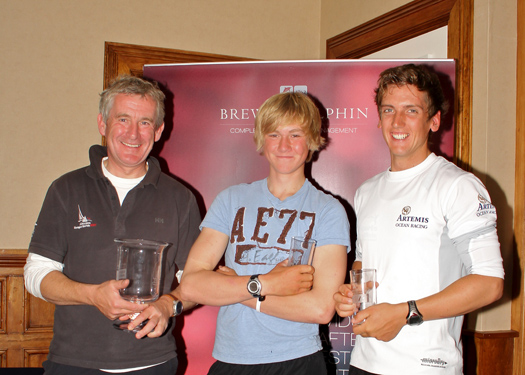
RS Elite Class Winners Simon Brien, Jack Brien and Ryan Seaton
Simon Brien on "Kin" was to rule the Elite class, and he found he was going to have to fight for it. On Day one, his brother Mark on "Full Marks" was covering him tack for tack and very little separated them on all three races. John McDowell' "Sea Breezes" [From Carrick] was also on the pace and finished the day one point behind "Kin". Bob Espey and Matt McGovern [Ballyholme] on an Ocean Youth Trust Boat was also consistently at the top of the fleet.
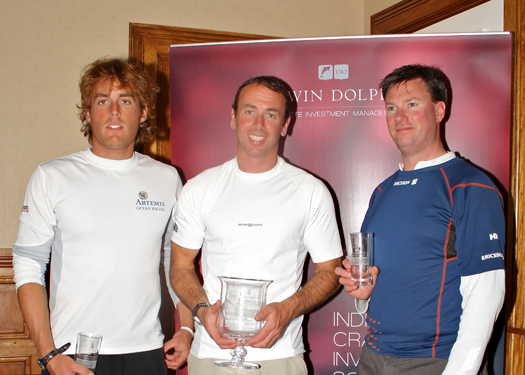
SB3 Class Winners Gareth Flannigan Ross Nolan and James Espey
The SB3 fleet also had it tight, day one saw a battle between Gareth Flannigan on "Splash Gordon" with James Espey and Ross Nolan on board match race with Peter Kennedy on "Ridge Fence" both boats finishing the day on equal points, followed closely by Trevor Darcy and Andrew Vaughan on "Bullet" on 8 points. On the Squibs, Greg Bell was out to flex his mussels on his new Squib "Prodigal" against him was Sam Lyness on "Worm" and Peter Wallace on "Toy for the Boy". The first race went to "Worm" with "Toy for the Boy second and "Prodigal" third, however a later protest was to knock "Worm" of her top spot and allowed everyone else to slide up one place. Race two also went to "Worm" followed by "Prodigal" and "High Flyer" in third. The third race again saw a change in the top spot this time "Toy for the Boy" taking pole. By the days end yet another fleet had two boats tied on points for the top spot, "Prodigal" and "Toy". Sundays racing was postponed for an hour to allow for the wind to fill in, and this was welcomed by many of the competitors due to lots of revelry the night before.
A fresh southerly breeze filled in and allowed Principle Race Officer Neale McCullough to get racing under way. Royal North's Commodore Mike Vaughan took race four in the Elite Fleet with "Kin" second and "Full Marks" third.
The fifth race "Kin" was back to her number one slot with the Vaughan's second and Andrew Allen's "No Match" third. The last race in the Elite fleet had to be seen to be believed as each boat tacked up the beat, each boat having to dip a boat that had dipped them on the previous tack and vice versa, by the top mark an d spreader mark they were bumper to bumper only a few inches separating them they looked like a train!
Eventually Simon Brien's "Kin" took the line honours and the series followed by Mike Vaughan's 64 and John McDowell's "Sea Breezes" in third overall.
In the SB3 fleet the second days racing saw no let up in fierce competition between Gareth Flannigan and Peter Kennedy in the end the series went to Flannigan's "Splash Gordon" with Kennedys "Ridge Fence" one point behind and Trevor Darcy's "Bullet third over all.
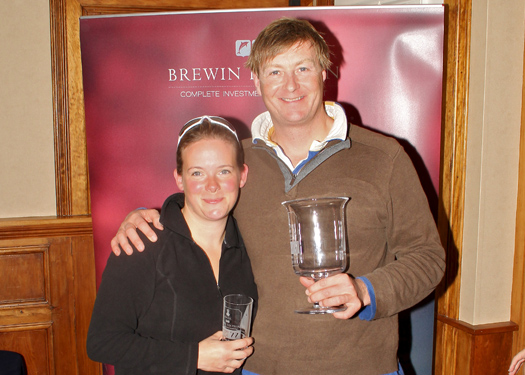
Squib Winners Greg Bell and Leah Anderson
Race Four for the Squibs gave Greg Bell his first win of the series with Des Clayton on "Inishmara" second and "Worm" third. All change again for race five this time the Anderson brothers "Born Wild" took the bullet followed by the worm and Gordon Patterson's "Quickstep" third. All was to play for in the last race as the series top three places was wide open.
In the end Sam Lyness won the race and secured him a second place overall. "Quickstep" took second giving them a fourth overall. Johnny Parks "Gizmo" finished third in that race quite satisfactory for the Squib newcomer. But the Series top spot went to Greg Bells "Prodigal" on twelve points one point ahead of "Worm" and "Toy for the Boy" third overall on 16 points.
The Commodore of Royal North Mike Vaughan thanked the sponsors Brewin Dolphin and all those who had been involved in the event, he commented on the extremely close racing in all fleets but especially in his own fleet the
Elites which were extraordinary!
SB3 and RS Elite Heading for Belfast Lough Showdown
In the RS Elite fleet defending Irish Champion John Patterson with crew David Kelso and Stephen Polly in Momentary Lapse will be up against some of the highest scoring boats from the recent National Championships at the Royal Forth Yacht Club, namely Simon Brien's Kin who finished third at that event and John McDowell's Sea Breezes who came fifth.
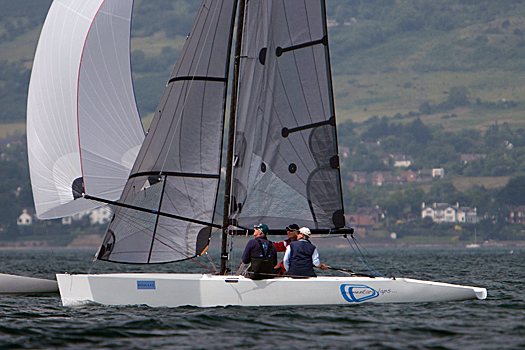
John Patterson, David Kelso and Stephen Polly who will be defending their Irish RS Elite title. Credit Thomas Anderson
In the SB3 Class local sailor Peter Kennedy and his crew in Ridgefence will be looking for revenge after Howth's Ben Duncan in Sharkbait beat them into second place at the Western Championships in Galway in June this year. Sharkbait is the boat in form, having won the Best Small Keelboat trophy at the recent Volvo Dun Laoghaire Regatta when she topped the 33 strong SB3 Class.
Royal Ulster Yacht Club is delighted to bring BT Infinity on board as event sponsor and with their help the event will be "bringing it all together" for two days of great racing.
"It is really a great opportunity for BT Infinity to support the major sailing championships this year at Royal Ulster", says Peter Morris, Consumer Director, BT in Northern Ireland. " Effective communication through the use of the latest technology is at the very heart of our business and as we rollout Superfast fibre optic broadband speeds, not just in Bangor, but across Northern Ireland, slow down, as in racing, just isn't a factor. The best of luck to all the crews and have a safe and successful competition".
Royal Ulster YC also acknowledges the support of North Down Borough Council and Quay Marinas, Bangor Marina in the running of this event.




























